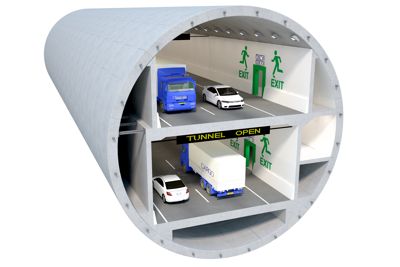
(WSDOT photo taken last month – work crews in the tunnel)
WSDOT says tonight that the Highway 99 tunneling machine is expected to arrive in its “disassembly pit” in May. That news comes as they also announce that Seattle Tunnel Partners has stopped digging to get the machine ready for the “final 1,000 feet of the 9,270-foot tunnel drive.” They’re checking its position because, WSDOT’s update says:
Recent surveys show that Bertha may be several inches off of the tunnel alignment. STP is conducting additional survey work and will make adjustments as needed to complete the tunnel drive.
Adjustments are common during tunneling, including on this project. STP made a similar adjustment to correct Bertha’s course after crews mined out of the pit that was used to access and repair the machine.
Crews will continue to perform routine maintenance on the machine for the next several days. They plan to resume mining next week.
According to STP’s most recent schedule, Bertha will arrive at the disassembly pit in May. The pit is located approximately 960 feet north of the cutterhead’s current location beneath Denny Way and Sixth Avenue North. Mining rates will continue to vary based on maintenance needs and soil conditions.
Crews successfully mined under the final building of the tunnel drive earlier this week. Bertha has traveled a total of 8,310 feet and built 1,270 of 1,426 concrete tunnel rings.
Because the end-of-the-line pit is part of a construction site, WSDOT has said it’s not planning to have a big event for the public to watch the machine break through.
Meantime, yet another reminder – the Alaskan Way Viaduct is scheduled to close for inspection 6 am-6 pm each day this Saturday and Sunday, with a few other events on 99 north of the Battery Street Tunnel – full details are here.


| 21 COMMENTS